Disclosure: This article contains affiliate links. We may earn a commission from purchases at no extra cost to you, which helps our travel content.
The golden autumn light spills across Tupelo's rolling terrain, illuminating landscapes that once witnessed pivotal moments in American history. While most visitors flock to the modest two-room house where Elvis first drew breath, I've discovered there's a deeper, more complex story etched into this Mississippi soil. Having spent years documenting overlooked prairies and plains across continents, I've developed a particular fondness for places whose historical significance often hides in plain sight. Tupelo is precisely such a treasure – a compact historical powerhouse where the Civil War's echoes still resonate if you know where to listen.
Tupelo National Battlefield: Small Space, Massive Impact
My first morning in Tupelo found me standing alone in what might be one of America's most modest national battlefield sites – just one acre marking where thousands fought and died in July 1864. The Tupelo National Battlefield sits quietly along Main Street, its small monument and interpretive panels belying the significance of what happened here when Confederate forces tried desperately to stop Union General Sherman's devastating march.
What struck me most wasn't the battlefield's size but the quality of preservation and interpretation. The National Park Service has masterfully contextualized this space, helping visitors understand how this battle protected Sherman's supply lines and ultimately contributed to the Union victory.
I spent nearly two hours here, my field notebook filling with observations as I traced the battle movements across modern Tupelo in my mind. The morning light made for exceptional photography conditions, casting long shadows across the memorial that seemed to connect past and present.

💡 Pro Tips
- Visit early morning or late afternoon for the best photography lighting and fewer visitors
- Download the NPS Tupelo Battlefield app before visiting for enhanced interpretation
- Bring a good pair of walking shoes as you'll want to explore the surrounding area for perspective
Brices Cross Roads: The Confederate Victory That Couldn't Save the Cause
Just a 20-minute drive northeast of Tupelo lies a site that captivated me even more than the main battlefield – Brices Cross Roads National Battlefield Site. Here, Confederate General Nathan Bedford Forrest achieved what military historians consider a tactical masterpiece, defeating a much larger Union force. Yet this victory, brilliant as it was, couldn't alter the war's inevitable conclusion.
The site features excellent interpretive trails that wind through terrain remarkably unchanged since 1864. I spent a full afternoon exploring, grateful for my moisture-wicking hat as Mississippi's autumn sun still packs considerable heat.
What makes Brices Cross Roads special is how it illustrates the complexity of Civil War history. While acknowledging Forrest's tactical brilliance, the site doesn't shy away from his deeply troubling post-war role in founding the KKK. This honest interpretation creates space for visitors to grapple with the full, complicated legacy of the Civil War era.
The visitor center houses artifacts recovered from the battlefield, including minié balls, uniform buttons, and personal items that humanize the soldiers who fought here.

💡 Pro Tips
- Combine with Tupelo National Battlefield for a full day of Civil War history
- Wear proper sun protection as much of the site offers limited shade
- Visit the nearby Bethany Cemetery to see graves of soldiers who died in the battle
Tupelo Veterans Museum: Personal Stories Behind the Battles
While Tupelo's battlefields preserve the landscapes of conflict, the Tupelo Veterans Museum houses the personal artifacts that bring individual stories to life. Housed in an unassuming building downtown, this volunteer-run museum contains a remarkable collection spanning multiple American conflicts, with a significant Civil War section.
What separates this museum from larger institutions is its intimacy and authenticity. Many items were donated by local families, creating a direct connection between Tupelo's present and past. I was particularly moved by a collection of letters between a Confederate soldier and his wife, their faded script revealing hopes, fears, and mundane details that humanized the conflict in ways battlefield markers cannot.
The museum's volunteer guides – often veterans themselves – offer insights you won't find in guidebooks. I spent nearly two hours chatting with Mr. Henry, an octogenarian whose grandfather's grandfather fought at Brices Cross Roads. His stories, passed down through generations, offered perspectives no historical marker could capture.
Before visiting any of Tupelo's Civil War sites, I recommend stopping here first to gain context through personal artifacts. I recorded many of Mr. Henry's stories using my pocket recorder, which has become an indispensable tool for capturing oral histories during my travels.
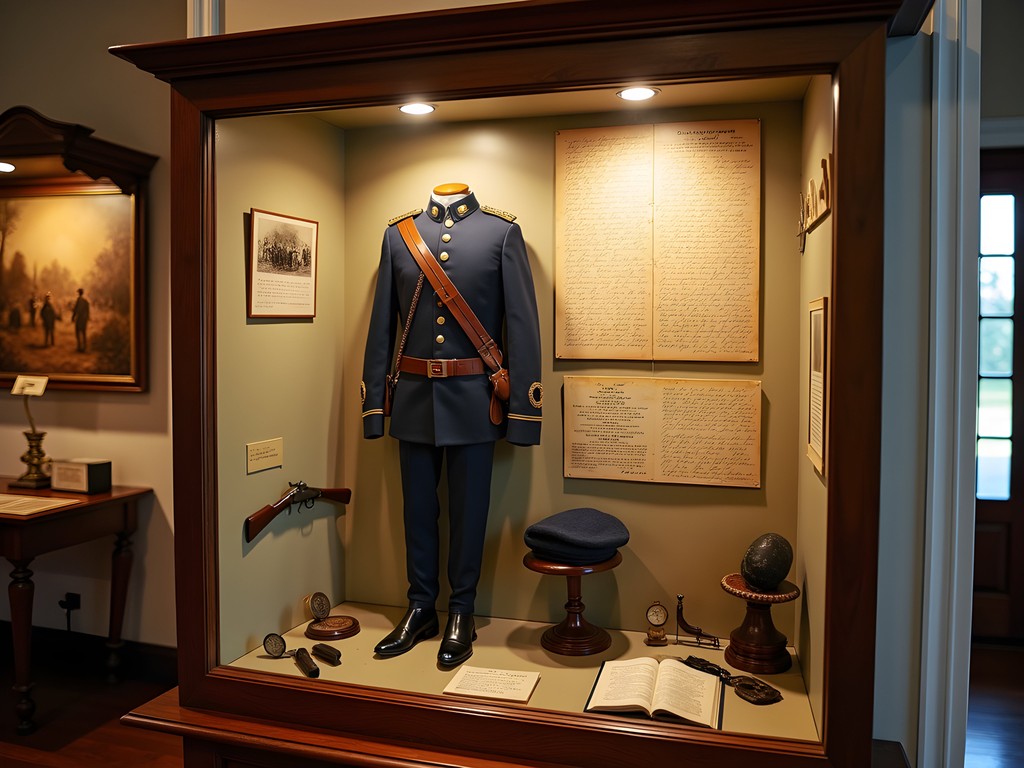
💡 Pro Tips
- Call ahead to confirm opening hours as they can vary seasonally
- Budget at least 90 minutes to fully appreciate the collection
- Bring cash for the suggested donation that helps maintain this volunteer-run museum
Natchez Trace Parkway: The Ancient Highway That Shaped Tupelo's History
No historical exploration of Tupelo would be complete without acknowledging the Natchez Trace Parkway, whose headquarters and visitor center are located here. This ancient travel corridor predates European settlement and played crucial roles in both indigenous history and the Civil War.
During the conflict, both Union and Confederate forces used the Trace for transportation and communication. Today, the Parkway Visitor Center offers excellent exhibits on this history, including how the Trace influenced military movements around Tupelo.
What I found most fascinating was learning how the geography of the Trace – this natural highway – essentially predetermined Tupelo's strategic importance. Control this corridor, and you controlled movement through a significant portion of the South.
After exploring the visitor center, I spent an afternoon driving sections of the Trace near Tupelo. The road atlas I always carry proved invaluable for identifying historical markers and pullouts that aren't always obvious from the main parkway signs.
For photographers, the Trace offers spectacular opportunities, especially in autumn when the hardwood forests lining the parkway burst into color. I found myself pulling over repeatedly to capture the interplay of light through golden leaves on this historic pathway.

💡 Pro Tips
- Visit the Parkway Visitor Center first to get maps and guidance for exploring the Trace
- Plan to drive at least a portion of the Trace – the section between mileposts 251 and 266 is particularly scenic
- The Parkway has a strictly enforced 50 mph speed limit – embrace the slow pace to spot historical markers
Hidden Gems: Tupelo's Lesser-Known Civil War Connections
Beyond the established historical sites, Tupelo offers several hidden gems for Civil War enthusiasts willing to venture off the typical tourist path. The Old Town Cemetery contains graves of both Confederate and Union soldiers, with weathered headstones telling silent stories of the divided community.
The Lee County Library houses a remarkable special collection of Civil War documents, including period newspapers, military records, and personal accounts from Tupelo residents. When I visited, the archivist kindly pulled out several fascinating items, including a diary from a local woman describing the aftermath of the Battle of Tupelo.
For those interested in how ordinary citizens experienced the war, the Oren Dunn City Museum includes a reconstructed period cabin with exhibits on civilian life during the conflict. I was particularly moved by displays showing how local women managed households and plantations while men were fighting.
My exploration of these lesser-known sites was greatly enhanced by the local history guide I picked up at a downtown bookshop. Unlike generic guidebooks, this locally-authored volume provided context and connections I wouldn't have discovered otherwise.
During my weekend in Tupelo, I stayed at a charming budget accommodation that occupied a renovated 1890s home – built not long after the Civil War ended. The owners shared fascinating stories about previous residents, including a Confederate veteran who lived there until the 1920s.

💡 Pro Tips
- Contact the Lee County Library archives in advance to arrange access to Civil War documents
- Pick up a free historical walking tour map from the Tupelo Visitors Center
- Visit the Old Town Cemetery in morning or evening for the best photography light
Final Thoughts
As I packed my camera backpack on my final Tupelo morning, I reflected on how this modest Mississippi town had surprised me. What began as a simple weekend exploration of Civil War sites evolved into a deeper understanding of how conflict shapes communities across generations.
Tupelo demonstrates that historical significance isn't measured in acres or monument height, but in how well a place preserves and interprets its complex past. By looking beyond Elvis – though his birthplace is certainly worth visiting too – travelers discover a community that has thoughtfully preserved multiple layers of American history.
The next time someone mentions Tupelo only in connection with its famous musical son, gently remind them that before Elvis changed American culture, Tupelo had already played its part in changing American history. Whether you're a dedicated Civil War buff or simply curious about the forces that shaped our nation, Tupelo's historical landmarks offer accessible, affordable, and deeply meaningful experiences that will stay with you long after you've returned home. I know they'll draw me back to these Mississippi plains again someday, camera in hand, still learning from landscapes that have witnessed so much.
✨ Key Takeaways
- Tupelo offers rich Civil War history that's often overshadowed by its Elvis connections
- The compact size of sites like Tupelo National Battlefield belies their historical significance
- Autumn provides ideal conditions for exploring and photographing Tupelo's outdoor historical sites
- Local museums and archives contain personal stories that bring the region's Civil War history to life
- Budget travelers can experience meaningful historical tourism in Tupelo without breaking the bank
📋 Practical Information
Best Time to Visit
Fall (September-November)
Budget Estimate
$200-300 for a weekend (accommodation, food, and activities)
Recommended Duration
2-3 days
Difficulty Level
Easy

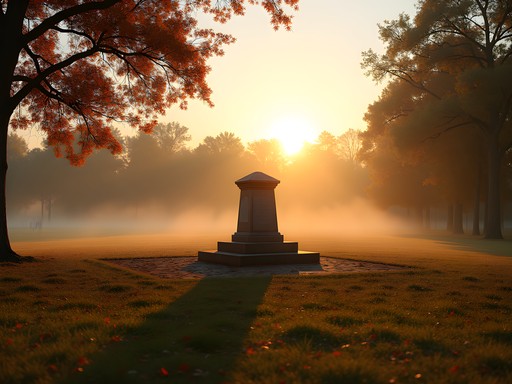



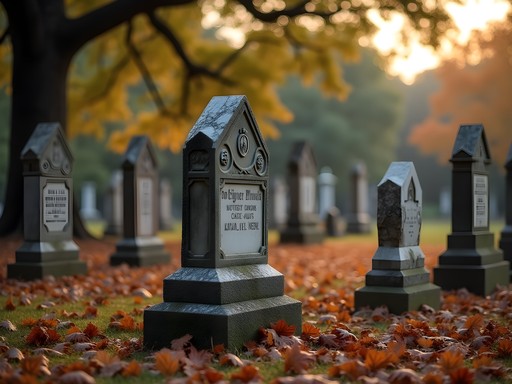


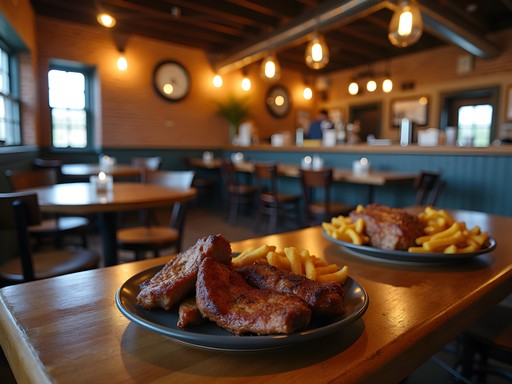
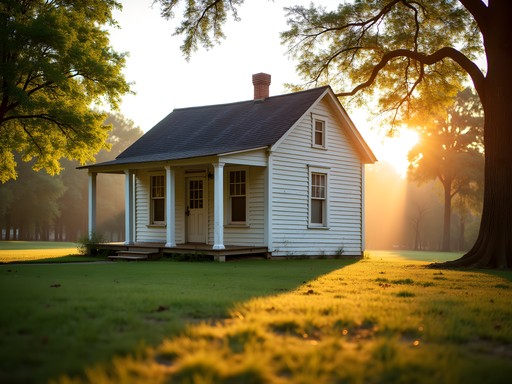






Comments
hikingblogger
Just got back from Tupelo and followed your itinerary almost exactly! The Natchez Trace Parkway was the highlight for me - so peaceful and the fall colors were just starting to show. We hiked a few of the shorter trails and it was perfect. One tip for anyone visiting the battlefield sites: they're smaller than you might expect, so downloading the NPS app beforehand really helps understand what you're looking at. The augmented reality features showing troop movements made a huge difference in appreciating what happened there.
Taylor James
Great tip about the NPS app! I should have mentioned that in the post. So glad you enjoyed the Natchez Trace - it's such a special place.
oceanone
Don't miss the gift shop at the Veterans Museum! They have these amazing hand-drawn battle maps you can't find anywhere else. I bought three when I visited!
hikingblogger
Those maps are awesome! I have the Brices Cross Roads one framed in my office now.
Sophia Gomez
What a refreshing angle on Tupelo! I was there for a business conference last month and managed to squeeze in visits to both the Elvis birthplace and the Tupelo National Battlefield. The contrast between the two attractions was striking - crowds at Elvis's home versus the quiet solemnity of the battlefield. The Veterans Museum was an unexpected gem. The docent there, an older gentleman named Jim, shared incredible stories about local soldiers that you won't find in any history book. He even showed me letters from a Confederate soldier to his wife that brought tears to my eyes. If you're photographing these sites, I found my travel tripod essential for those golden hour shots at the battlefield. The light there is magical just before sunset.
journeyqueen
How much time would you recommend for seeing all these sites? Planning a weekend trip.
Sophia Gomez
Not the author, but I did this exact itinerary last month. A full weekend is perfect - one day for the battlefield sites and another for the Natchez Trace Parkway. The parkway deserves at least half a day by itself!
journeyqueen
Thanks Sophia! That's super helpful for planning.
Hunter Thompson
Brilliant write-up, Taylor! I backpacked through Mississippi last year but completely missed these Civil War sites in Tupelo. The Brices Cross Roads battle sounds fascinating - a Confederate victory that ultimately didn't change the war's outcome. That kind of historical irony is what makes these lesser-known sites so compelling. Definitely adding these spots to my itinerary when I'm back in the States next spring!
Taylor James
Thanks Hunter! Brices Cross Roads is definitely worth the visit. The visitor center has some excellent maps that really help visualize how the battle unfolded.
Hunter Thompson
Cheers for the tip! I'm a sucker for a good battle map.
oceanphotographer
Never knew Tupelo had so much Civil War history! Always thought it was just Elvis's birthplace.
Lillian Diaz
Taylor, this post hit home for me! I visited Tupelo last fall expecting it to be all Elvis all the time, but ended up spending two full days exploring these exact historical sites. The Natchez Trace was absolutely stunning with fall colors - I hiked several short trails and got some amazing photos with my mirrorless camera. What really struck me was how intimate these battlefields feel compared to places like Gettysburg. You can really sense the history there without massive crowds. For anyone visiting, I'd add that the local historical society occasionally does guided tours of these sites - worth checking their schedule before you go. The stories they share add so much context that you'd miss otherwise.
Taylor James
Thanks for adding that tip about the historical society tours, Lillian! I didn't know about those when I visited. The fall colors on the Natchez Trace are spectacular - glad you got to experience that too!
adventurebackpacker
Great post! I'm planning a road trip through Mississippi next month and definitely adding Tupelo to my itinerary now. Is it possible to do both the Elvis stuff and these Civil War sites in one day? My husband's a huge Elvis fan but I'm more into history.
Taylor James
Absolutely! The Elvis Birthplace only takes about 2 hours max, and it's just a few minutes from downtown. You could easily do that in the morning, grab lunch at Kermit's Outlaw Kitchen downtown (highly recommend!), then hit the Tupelo National Battlefield and Veterans Museum in the afternoon. Brices Cross Roads would need an extra half-day though.
adventurebackpacker
Perfect! Thanks for the lunch recommendation too. Can't wait to visit!
springguy
Don't miss the Natchez Trace Parkway visitor center if you're into history! It's right in Tupelo and gives great context for the whole region.
springguy
Finally! Someone talking about Tupelo beyond just Elvis. I visited last year and the Tupelo National Battlefield was way more interesting than I expected for such a small site. The interpretive signs really help you visualize what happened there. Brices Cross Roads was worth the short drive too - much less crowded and really peaceful. Did you get a chance to talk with any of the volunteers at the Veterans Museum? There was an older gentleman there who knew EVERYTHING about local Civil War history.
Taylor James
Thanks for reading, springguy! Yes, I spent almost two hours talking with Mr. Henderson at the Veterans Museum - his knowledge is incredible. Did you take the driving tour between the battlefields? There are some lesser-known markers along that route that I found fascinating.
springguy
I missed the driving tour! Definitely doing that next time. Thanks for the tip!
Riley Griffin
This brings back memories! We took our kids (11 and 14) to Tupelo last year thinking it would be just a quick Elvis stop, but ended up spending three days exploring the Civil War sites. The Junior Ranger program at the Natchez Trace Visitor Center was fantastic - got my history-resistant teenagers actually engaged with the exhibits. The most unexpected highlight was finding my great-great-grandfather's name in the regiment lists at the Veterans Museum. The kids were awestruck by that personal connection. If anyone's planning a family trip, I highly recommend the guided battlefield tours - they adjust the content for different age groups. Taylor, your article captures the emotional weight of these places perfectly.
moonqueen
That's so cool about finding your ancestor! Might have to check my own family history before visiting.
Venture X
Premium card with 2X miles, $300 travel credit, Priority Pass